48-Volt Hybrids+Advanced Cylinder Deactivation Is Coming
I have driven the car of the future. Not some distant, expensive, exotic future, but a future that is going to start to define the cars you drive over the next few years. To check off the usual suspects—the car didn’t fly, wasn’t self-driving and wasn’t even fully electric or fueled by hydrogen. But it was electrified with a small battery and contained an engine packed with brand-new software.
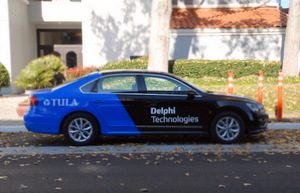
The car was provided by one of the world’s top automotive suppliers—Delphi Technologies—and demonstrated a side of the “future car” discussion sometimes lost here in Silicon Valley where I reside. We are going through revolutionary times—yes—but the future may end up being defined by more incremental changes.
The changes inside the Volkswagen Passat I drove were born out of the software revolution and battery advances coming out of Silicon Valley and elsewhere in the automotive world, but their implementation in a car is subtle. The computer power in a modern automobile continues to grow. This software taps into it to wring more efficiency from a traditional engine at minimal cost. Dropping a battery into a car is old news at this point, but the costs of doing it has been dropping this past decade, while the power derived from a battery continues to grow.
Two Key Factors
Sometimes we may forget that car companies are not there just to turn out world-changing, dazzling new machines. For most auto companies–the bottom line is the bottom line. They’re in business to make money as well as cars, much as are the technology and supplier companies contributing the parts and pieces that make up a modern automobile. Electric cars are great, but they are expensive and are not yet selling at volumes high enough to drive down costs draatically.
Another factor are government regulations worldwide that are driving auto companies to lower-CO2 cars, with electrification is the logical path to get there. So, for a profit-driven automaker (and that’s all of them), the quest is to electrify and drive down emissions (and increase fuel efficiency) at the most reasonable cost.
Enter Suppliers
Suppliers live to solve automakers problems. They recognize that while they have one foot in the present, solving immediate issues of cost and volume production, they also have to address longer term solutions. So Dephi has a division focused on full electric powertrains and plans to bring that into the mix during the coming years.
In the meantime, as CTO Mary Gustanski said at a recent media briefing: “In 2025 95 percent of all light-duty vehicles will still have internal combustion engines,” but will still have to meet stringent emissions regulations and remain affordable. Gustanski sees Delphi as having the value proposition that gives automakers the biggest fuel economy boost for the least cost. The technologies are:
- Gas direct-injection engines
- Engine control software to enhance efficiency of the engine
- Proprietary Tula software that allows individual cylinder deactivation
-
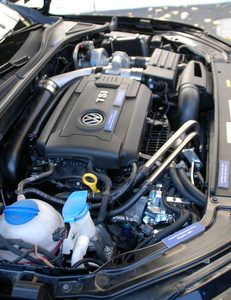
The key of the eDSF 48V system is it all fits under the hood A 48-volt mild hybrid system
Gustanski added that Delphi’s secret sauce is system integration, which is where the cost is wrung out of the package. The Passat I drove with the system claimed to deliver at least a 15 percent CO2 reduction (they’re aiming for 20 percent) with increased low-end torque for improved acceleration and seamless start-stop operation. The incremental cost is in the hundreds of dollars to the OEM, according to Delphi. The company expects systems like this, incorporating 48-volt batteries, to grab 20 percent of the new car market by 2025.
Scott Bailey, Tula Technology’s CEO, called this “smarter fuel efficiency,” using the increased computer power found in a vehicle to “dynamically right-size the engine.” Its Dynamic Skip Fire (DSF) system uses algorithms added to the engine control software only run as many cylinders as are needed under each different driving situation. The driver controls the action via the accelerator. Ask for more power and it is there; coast down and the engine rests. The Tula software also factors in engine balance so its operation is transparent to the operator.
We’ve had a trial run with the Tula software before and were impressed with its functionality. Adding in a 48-volt hybrid battery takes the system to a new level. The fuel economy gains may not be as dramatic as a plug-in hybrid, but the cost of the system promises to bring exceptional fuel economy and a better driving experience to a broad range of cars. Although neither Delphi or Tula would disclose the manufacturer, they said the DSF package as a stand-alone is already getting close to production while they expect the eDSF package to follow soon after. But both supplier companies also added that they think they can wring even more efficiency out of the old ICE. So hang on.
New Engine Tech
In a competitive sport, there are at least two approaches to getting a win. One is to go for the knock-out punch, overwhelming your opponent with power, skill and strength. It’s risky and can be costly if you have a misstep. Think surprise knockout by a challenger going against an overconfident foe. A second strategy is the one for the long game–
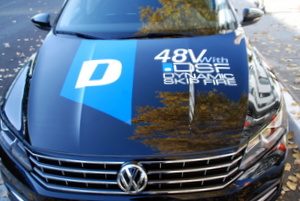
if we’re sticking with the boxing analogy, think Ali’s rope-a-dope. Keep in the game by wearing down your opponent by being better, getting in a few more punches, playing a smarter and better game.
The auto industry is no boxing match; it’s closer to a rugby scrum on some days, but the tactics above are often on display. Delphi Technologies, the automotive powertrain and propulsion portion of what once was Delphi (the other, now separate part is Aptiv, which is focused on mobility solutions, smart vehicle architectures and connected cars). While they are developing electric car technology, they see a long game with the internal combustion engine and will be showcasing some of their latest counterpunches at CES next week. Their punch–take a sophisticated cylinder deactivation technology and mate it with 48-volt mild electrification for substantial fuel economy gains with no loss of performance.
Flash Drive: Clean Fleet Report “Flash Drives” are concise reviews of vehicles that include the major points and are easy and quick to read. A “Flash Drive” is often followed later by a comprehensive test drive review.
Related Stories You Might Enjoy:
Tech: Silicon Valley Invades Your Engine
Tech: Engine Variable Compression Ratio
Tech: New 48-Volt Mild Hybrids Coming
Disclosure:
Clean Fleet Report is loaned free test vehicles from automakers to evaluate, typically for a week at a time. Our road tests are based on this one-week drive of a new vehicle. Because of this we don’t address issues such as long-term reliability or total cost of ownership. In addition, we are often invited to manufacturer events highlighting new vehicles or technology. As part of these events we may be offered free transportation, lodging or meals. We do our best to present our unvarnished evaluations of vehicles and news irrespective of these inducements.
Our focus is on vehicles that offer the best fuel economy in their class, which leads us to emphasize electric cars, plug-in hybrids, hybrids and diesels. We also feature those efficient gas-powered vehicles that are among the top mpg vehicles in their class. In addition, we aim to offer reviews and news on advanced technology and the alternative fuel vehicle market. We welcome any feedback from vehicle owners and are dedicated to providing a forum for alternative viewpoints. Please let us know your views at publisher@cleanfleetreport.com.

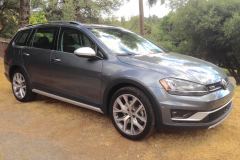




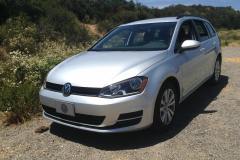
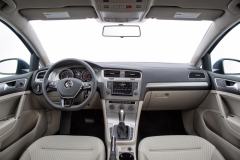

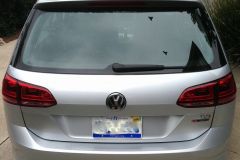
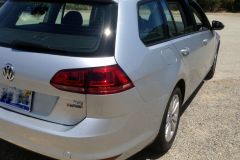
I’m curious if I read this correctly and if I did, is this really acceptable for commercialization given the competition’s aim for multiples of these numbers? “…The Passat I drove with the system claimed to deliver at least a 15 percent CO2 reduction (they’re aiming for 20 percent)…”
@Brian Allman,
Thanks for reading Clean Fleet Report. I think you may not appreciate what commercialization means in the larger automotive market. First, the discussion is taking place on a global scale, where internal combustion engines are still going strong (actually just starting in some markets). For all the talk about leap-frogging to all electric drive, costs remain a barrier. Witness the panic in the U.S. when there was a threat of dropping the federal tax credit for plug-in vehicles. The concern was that this market, which consists primarily of vehicles being sold at a loss, would dry up without the tax credits. A boost in fuel economy/CO2 reduction of 15-20% for the relatively low cost is a BIG deal because a company with this technology could potentially sell large quantities of these vehicles at a profit while continuing to meet the incremental GHG reduction goals. Those profits can be used to fund more drastic reduction technology like fuel cells or battery electric vehicles. That’s the strategy most auto companies are using as they wait for the market to catch up with these more advanced technologies. –ed.